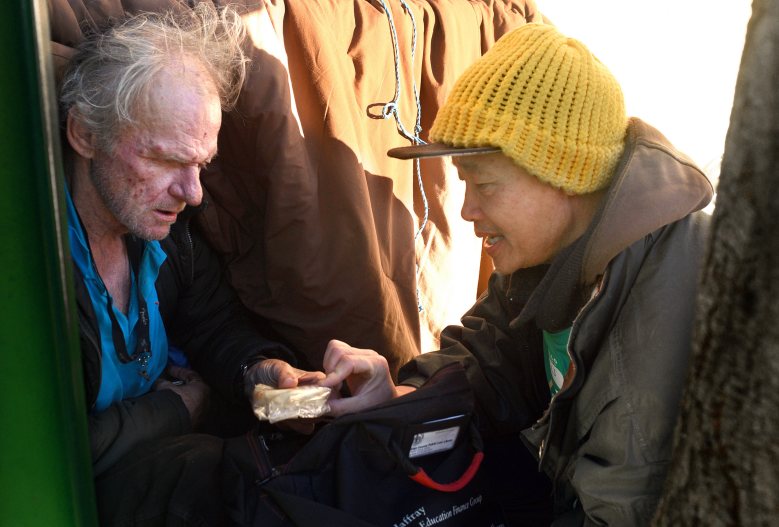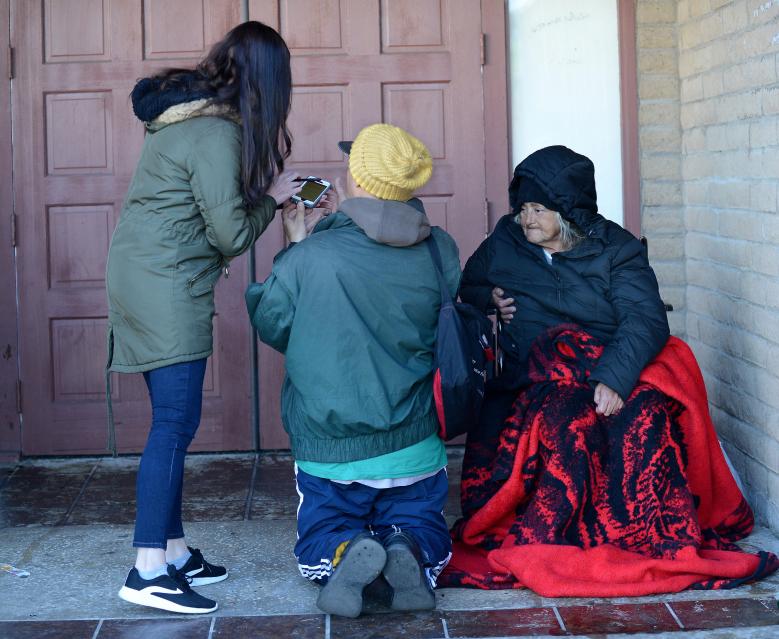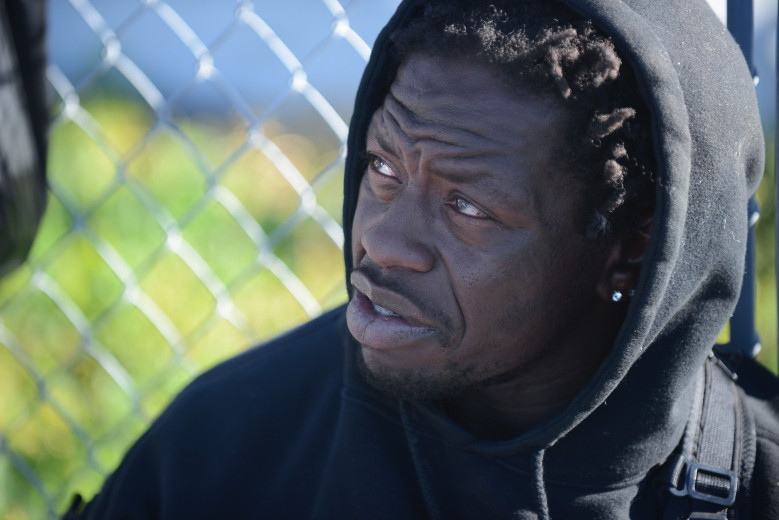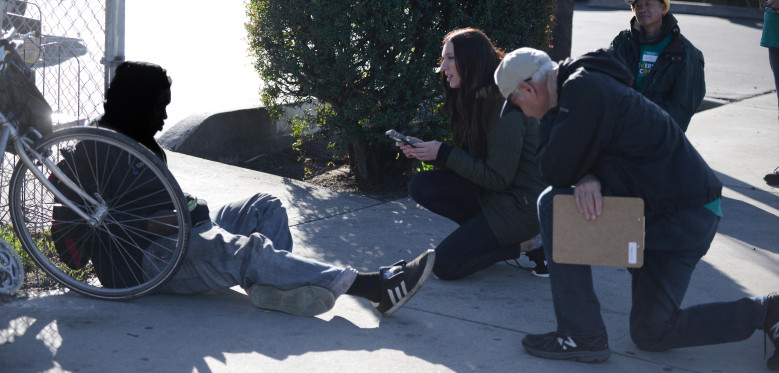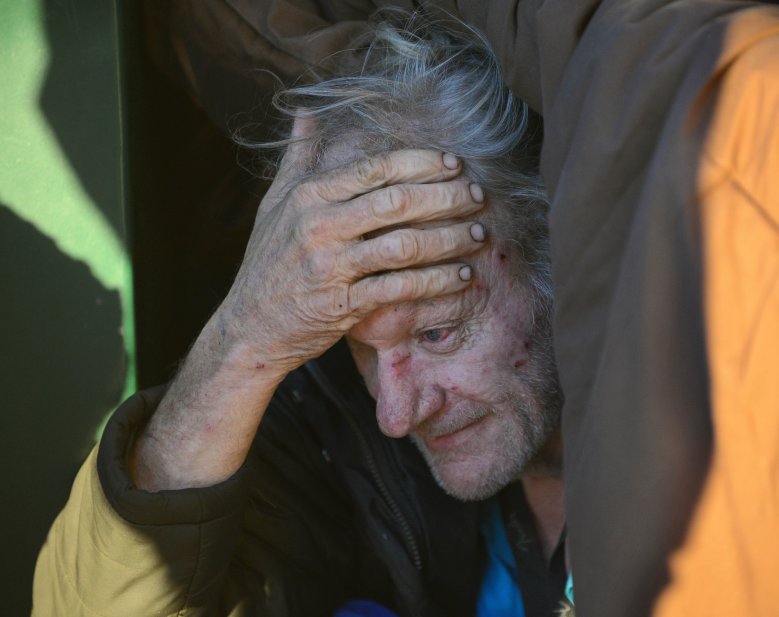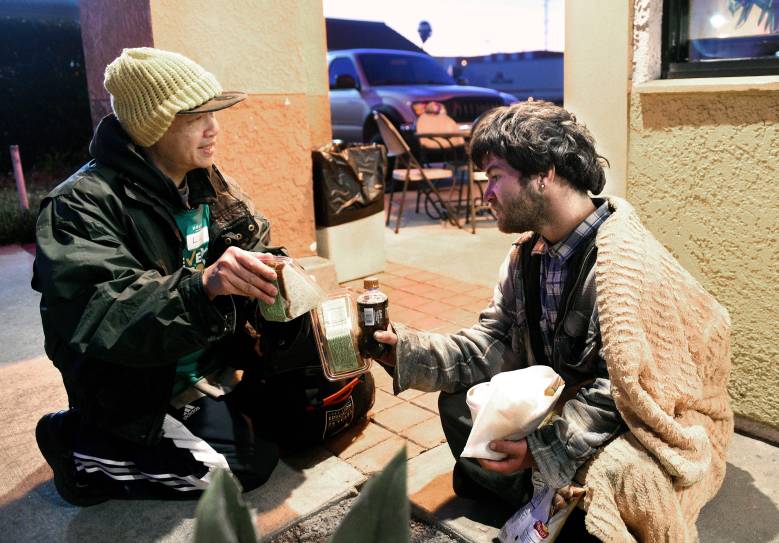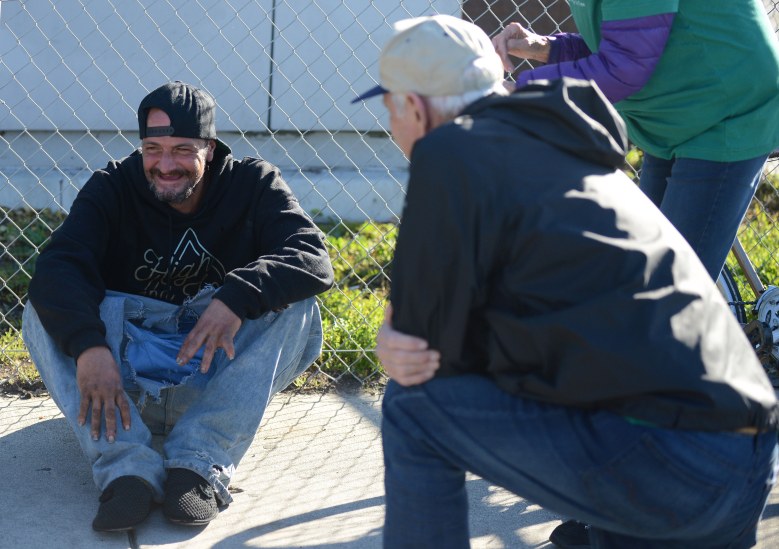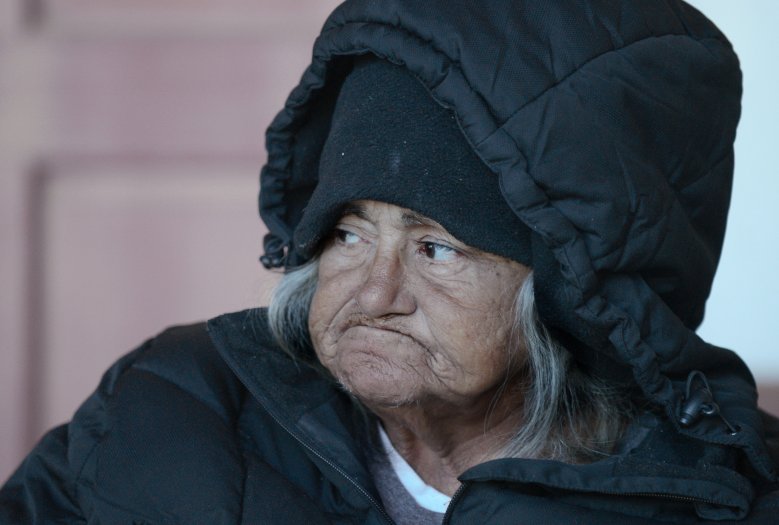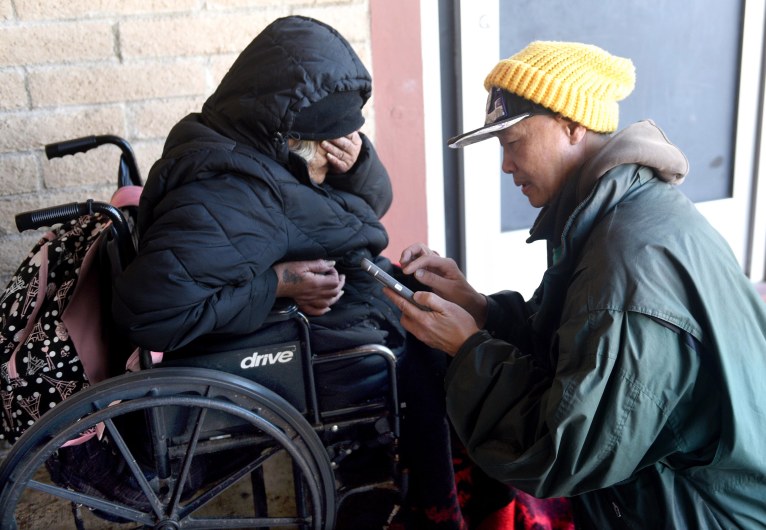More than 1,500 counted so far in Orange County homeless census
The Point in Time count is taking place January 23 and 24
In the space of four hours that started before dawn on Wednesday, Jan. 23, volunteers armed with paper maps and data-collection apps downloaded on their cellphones or tablets managed to survey more than 1,500 homeless people sleeping outdoors or in vehicles around Orange County.
That was only the beginning of the street census for the 2019 Point In Time count — one deemed a success by those in charge of fulfilling the federal mandate and the boots on the ground who made it happen.
Debra Mendoza was one of the homeless people interviewed during the 2019 Point In Time count of homeless people in Orange County on Wednesday, January 23, 2019. (Photo by Bill Alkofer, Contributing Photographer)
More volunteers, some of them holdovers from the morning count, were dispatched in teams again during the night. And follow-ups in areas that might have been missed on Wednesday were planned for Thursday morning and evening.
For the street count, volunteers were guided by maps that outlined a 1.25-square-mile area for them to scour. Red dots on the maps indicated “hot spots” where homeless people were known to sleep or congregate.
By 10 a.m., all but one of the 95 teams had returned from their task of canvassing 260 grid maps that covered the county. Some of the numbers collected:
- 152 seniors
- 105 military veterans
- 52 youth (ages 18-24)
- 20 families with underage children
Each of the field teams were led by someone with experience in doing outreach to homeless people or had been involved in previous Point In Time exercises. They all donned teal-colored T-shirts emblazoned with the county seal and the words “Everyone Counts.”
Fritz Von Coelln, a retired furniture manufacturer from Fullerton, joined a team of four people dispatched to Stanton from a deployment center at Magnolia Baptist Church in Anaheim, one of five sites in each of the county’s supervisorial districts where about 1,200 to 1,400 volunteers gathered.
This was the first time that Von Coelln, 80, had participated in the Point In Time count. The willingness of nine of the 10 homeless people approached by his team to share details of who they are and how they became homeless surprised and heartened Von Coelln.
“I thought they would say ‘Go away from me,’ but they didn’t.”
Teamwork works
For unknown reasons, Von Coelln could not fully access the Survey123 for ArcGIS app on his iPhone 7, one of only a few technical glitches reported by volunteers the entire morning.
He took turns conducting interviews with repeat volunteers, retired teacher Betty Elsing, 82, and public law reference librarian Lu Nguyen, 65. He used the phone of their team leader, Aussy Henderson, 27, an intern with the homeless outreach service City Net.
Von Coelln also served as a sort of scout, taking the initiative to move ahead of the group in looking for homeless people.
They found homeless people either sleeping or just having woken in spots outside stores, at strip shopping centers and outside a church, a daycare center, a bank and a liquor store.
A few admitted to drug or alcohol addictions; others had mental illnesses, or suffered physical injuries and family dysfunction.
Mark Benjamin was bedded down under blankets stretched over a shopping cart and an expandable shower curtain rod that extended from a high voltage electrical box to the back wall of a bank building on Beach Boulevard in Stanton.
At 59, Benjamin has been homeless off and on, this last time for at least two years. He said he is disabled by degenerative discs and lost his right eye when he got punched by another man on the street. He’s been in jail. He’s lived in shelters and transitional housing.
“I roam,” he told the volunteers. “I like Buena Park. I’m going to be going back there.”
Benjamin recently started getting a disability check and has been in contact with service providers, including a county public health nurse whose worn card he took from his wallet.
Benjamin wanted to reach the nurse but didn’t have a phone, so the volunteers called for him. Benjamin also asked them to try to reach his 85-year-old father; he couldn’t remember the last time he spoke to him.
“That’s one thing you guys could do for me.”
Shelters and families
There was more to the Point In Time census than the street count.
On Tuesday night, a separate effort was made to determine the number of people living in shelters, transitional programs, and other institutional settings. The federal Dept. of Housing and Urban Development, which uses the Point In Time count to help determine and allocate resources to address homelessness, requires an annual shelter count.
While the volunteer teams worked their maps on Wednesday, organizations that are part of the Family Solutions Collaborative took a different approach to include homeless families with underage children in the count.
Those families tend to remain hidden from the eyes of the public, largely out of fear that the children will be taken into protective custody.
The nonprofits that work with the families made a coordinated effort to ask as many as they could to come into their offices on Wednesday to be surveyed. They expected visits from 225 families, according to information provided to Susan Price, Orange County’s director of care coordination and the point person on efforts to address homelessness.
Price also said other “rovers” would go to such sites as Mary’s Kitchen in Orange and the Courtyard emergency shelter in Santa Ana’s Civic Center to make a count of homeless people who visit those places only for meals.
Price spent the morning stationed at the deployment center in a county building in Santa Ana and watched the information gathered by the field teams populate a data dashboard projected on a big screen.
“It was kind of a ‘wow’ that they did 1,500 surveys in four hours,” Price said.
The last count in 2017, done with paper and pen, only yielded 300 surveys — a limited proportion of the 2,584 people found to be living without shelter.
There won’t be a sense of the final numbers for 2019 until the count is completed and any duplication is weeded out.
A report must be turned in to HUD offices for review sometime in April, Price said, adding that the county likely will release a snapshot of the count before the complete report is made public.
“This is a starting point,” Price said of the data being collected and how it can be used. “We’ll be able to move with greater intention.”
Left on her own
Besides asking about age, gender, race or ethnicity and health issues, the field teams also posed questions about such concerns as substance abuse and domestic violence.
Debra Mendoza, 64, said domestic violence involving one of her sons and a fight to keep custody of her two grandchildren led to her being homeless for the past four years.
She sat in a wheelchair under the covered entrance of a daycare, trying to stay warm with a red fleece blanket on her lap and a hooded parka zipped all the way up.
Her last permanent address had been in Anaheim.
She asked for water, saying “I’m so dehydrated.”
Lu Nguyen knelt beside Mendoza and gave her two bottles of a light tea and a package of pastries, the last of the snacks a friend had given him to hand out.
As the volunteer team departed, Nguyen called out, “Good luck to you.”
